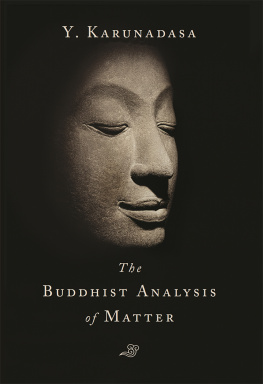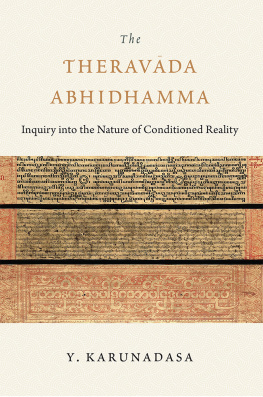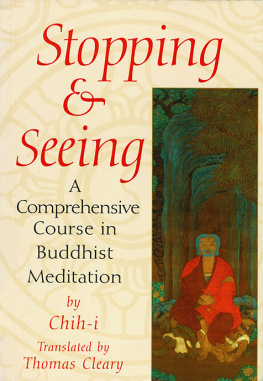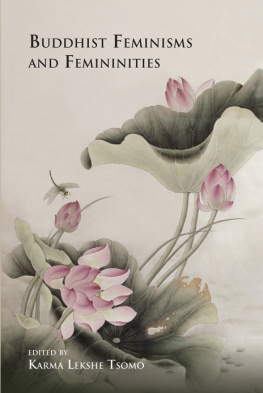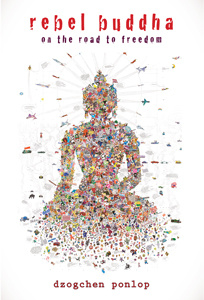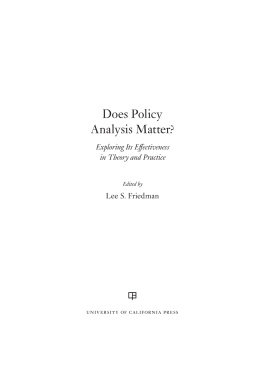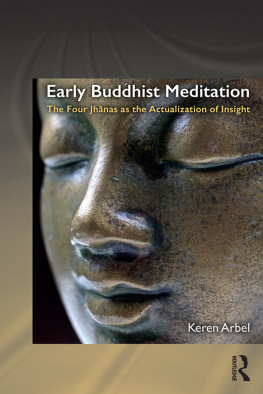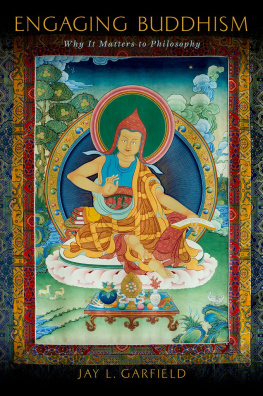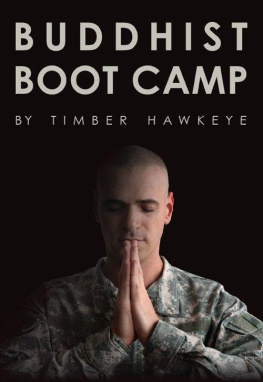Y. Karunadasa - The Buddhist Analysis of Matter
Here you can read online Y. Karunadasa - The Buddhist Analysis of Matter full text of the book (entire story) in english for free. Download pdf and epub, get meaning, cover and reviews about this ebook. publisher: Wisdom Publications, genre: Religion. Description of the work, (preface) as well as reviews are available. Best literature library LitArk.com created for fans of good reading and offers a wide selection of genres:
Romance novel
Science fiction
Adventure
Detective
Science
History
Home and family
Prose
Art
Politics
Computer
Non-fiction
Religion
Business
Children
Humor
Choose a favorite category and find really read worthwhile books. Enjoy immersion in the world of imagination, feel the emotions of the characters or learn something new for yourself, make an fascinating discovery.
- Book:The Buddhist Analysis of Matter
- Author:
- Publisher:Wisdom Publications
- Genre:
- Rating:3 / 5
- Favourites:Add to favourites
- Your mark:
- 60
- 1
- 2
- 3
- 4
- 5
The Buddhist Analysis of Matter: summary, description and annotation
We offer to read an annotation, description, summary or preface (depends on what the author of the book "The Buddhist Analysis of Matter" wrote himself). If you haven't found the necessary information about the book — write in the comments, we will try to find it.
The Buddhist Analysis of Matter — read online for free the complete book (whole text) full work
Below is the text of the book, divided by pages. System saving the place of the last page read, allows you to conveniently read the book "The Buddhist Analysis of Matter" online for free, without having to search again every time where you left off. Put a bookmark, and you can go to the page where you finished reading at any time.
Font size:
Interval:
Bookmark:
THE BUDDHIST ANALYSIS OF MATTER
A dazzling textual exposition of the analysis of matter in Theravda Abhidhamma, connecting Buddhist philosophy, psychology, and ethics.
G. A. Somaratne, assistant professor, Centre of Buddhist Studies, The University of Hong Kong
This is a rebirth of a classic in modern Buddhist studies. Written in the 1960s, a good enough time for any academic work to be replaced by more modern works in the relevant field of study, Professor Karunadasas treatise still stands tall. Although a scholar is not expected to write the last word on a subject, if it has happened we have to be humble enough to acknowledge it. The Buddhist Analysis of Matter belongs to that rare class of works, the members of which are not too many.
Asanga Tilakaratne, School of Buddhist Studies, Philosophy and Comparative Religion, Nalanda University, Rajgir, Bihar
This is groundbreaking research in the Buddhist philosophical analysis of matter, with many new ideas. Professor Karunadasa skillfully presents his ideas in such a way that readers easily follow his logical arguments.
Guang Xing, associate professor and director, Centre of Buddhist Studies, The University of Hong Kong

This admirable book began life more than half a century ago as a doctoral thesis for the School of Oriental Studies at the University of London... Edward Conze, the most eminent Buddhologist of the day, wrote that it was likely to be the last word on the subject for some time to come. There can be little doubt that the same judgment could be repeated today.
from the foreword by RICHARD GOMBRICH, Emeritus Boden Professor of Sanskrit, University of Oxford
Rare and remarkable, Y. Karunadasas Buddhist Analysis of Matter is a perennial classic that fully retains its currency and authority. In the fifty years since it was first published no one has come near to Karunadasas expert exposition of the Theravdin philosophy of matter. The author does not repeat classical sources mechanically he brings them to life with lucid explanations that do not shy from the complexity of the terrain. There is no better introduction to the subject.
PETER SKILLING (Bhadra Rujirathat), Chulalongkorn University, Bangkok
Professor Y. Karunadasa has long been one of the clearest, most dependable, and most knowledgeable exponents of the thought-world of Early Buddhism. His treatise on the Buddhist analysis of matter gives us a fascinating look at how the thinkers of the Theravda Abhidhamma tradition pursued the cursory treatment of matter in the suttas to new depths of detail, providing a foundation for a deep contemplation of the first of the five aggregates into which Buddhism analyzes a sentient being. I am glad that this early work of his is now being made available to a wider readership.
VEN. BHIKKHU BODHI, Buddhist scholar and translator
The publisher gratefully acknowledges the generous help of the Hershey Foundation in sponsoring the production of this book.
THIS ADMIRABLE BOOK began life more than half a century ago as a doctoral thesis for the School of Oriental Studies at the University of London, and when in due course it was published (by the government of Sri Lanka), Edward Conze, the most eminent Buddhologist of the day, wrote that it was likely to be the last word on the subject for some time to come. There can be little doubt that the same judgment could be repeated today. Although in the interim the serious study of Pli and its early literature so far declined that, if one excludes a few monastics in Theravda monasteries in Asia (who are not likely to read scholarly work in English), the number of those equipped to appreciate it almost dwindled away, there is now a keen interest all over the world in the study of Pli, both in lay Buddhist circles and in institutes of higher learning, and since there is so little corresponding to this book available, it meets a need.
Clearly, the great majority of those who are likely to want to read a book about early Buddhism are attracted to the subject out of a concern for its religious side. In his final chapter, The Ethico-Philosophical Basis of the Buddhist Analysis of Matter, Professor Karunadasa faces this issue directly. In the chapters opening paragraph he writes: The Buddha himself says that as a religious teacher he teaches only two things: suffering and its cessation. Buddhisms analysis of the world of experience is undertaken not for its own sake but for evolving a rationale for its doctrine and discipline. Attention is not concentrated on the empirical world in and for itself. The Buddhist inquiry into the nature and constitution of matter and its relevance for Buddhism cannot be properly understood if the subject is divorced from its religious context.
He then goes straight on to write: The close connection between the Buddhist analysis of matter and Buddhist ethics is indicated by the oft-recurring statement... [that] matter is something that is favorable to, or productive of... the fetters that bind the living being to sasric existence. He continues: The analysis of matter is thus necessitated by an ethical need... In the earlier texts where rpa [matter] is explained in simple and general terms the ethical approach to the subject is much more pronounced. That rpa is impermanent and that therefore it cannot be made the basis of true happiness is the main theme that runs throughout all such discussions.
The difficulty that the author cannot quite circumvent is that this straightforward explanation of the marginal position that matter holds in early Buddhist soteriology, while it is important, is hardly enough to fill a thesis or a book. Theoretical statements and arguments about matter are to be found in texts for more than a millennium after the time of the Buddha, and before long their connection to Buddhist ethics becomes increasingly tenuous. It is customary to call this theorizing Buddhist philosophy, but it no longer underpins the Buddhas religious teachings and it is hard to see any interaction between these theories and Buddhisms core, the soteriological doctrines, which continue unaffected.
On the other hand, a historian can trace influence and interaction between the Pli tradition and other ancient Indian cosmological teachings, both Buddhist and non-Buddhist, and here Prof. Karunadasa undoubtedly breaks new ground.
Prof. Karunadasa counts among his assets an exemplary clarity of thought and its natural concomitant, a gift for lucid exposition, and he conscientiously translates all Pli terms and quotations. Nevertheless I think it has to be admitted that the very nature of his subject matter makes it inevitable that readers who do not know any Pli will find it a challenge fully to understand even chapter 1, let alone what follows. However, the author has provided a one-page summary of the content of the book, containing no Pli words, which is printed in the front of the book. I would recommend that newcomers to the subject first read this summary and then the final chapter, after which they will be better equipped to tackle the rest of the book.
Richard Gombrich
Emeritus Boden Professor of Sanskrit, University of Oxford
This work is an attempt to interpret the Buddhist view of matter as presented in Theravda Buddhism, and is mainly based on the Abhidhamma, both of the earlier period containing the seven manuals of the Abhidhamma Piaka and of the later period containing Abhidhammic commentaries (ahakath), subcommentaries (k), and such compendiums as the Abhidhammatthasagaha of cariya Anuruddha.
Font size:
Interval:
Bookmark:
Similar books «The Buddhist Analysis of Matter»
Look at similar books to The Buddhist Analysis of Matter. We have selected literature similar in name and meaning in the hope of providing readers with more options to find new, interesting, not yet read works.
Discussion, reviews of the book The Buddhist Analysis of Matter and just readers' own opinions. Leave your comments, write what you think about the work, its meaning or the main characters. Specify what exactly you liked and what you didn't like, and why you think so.

